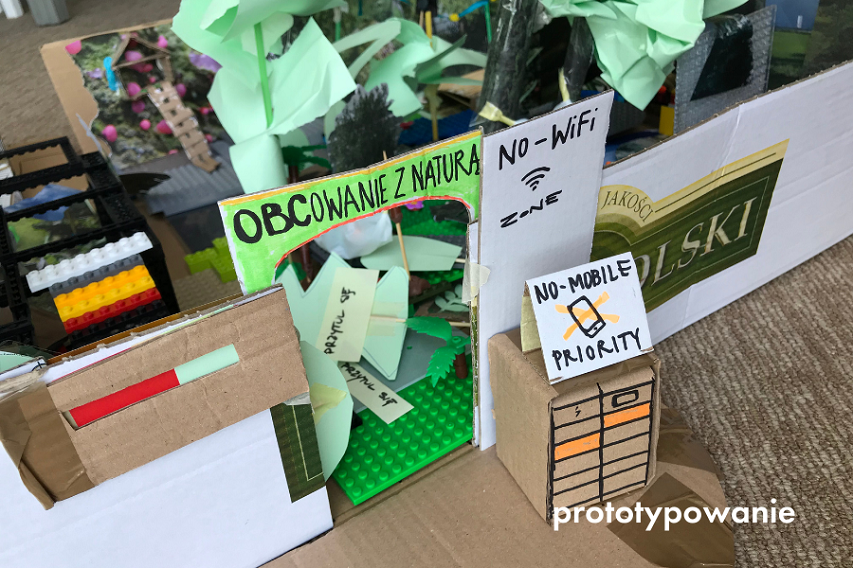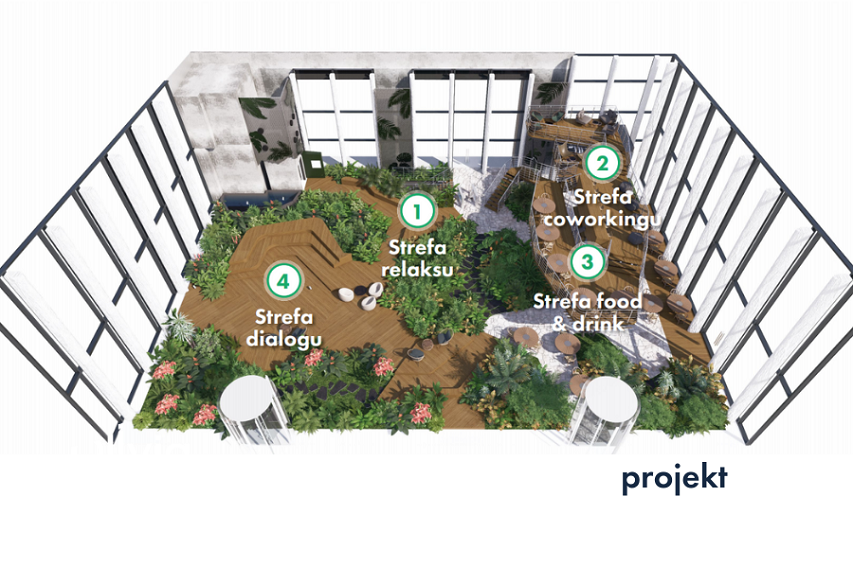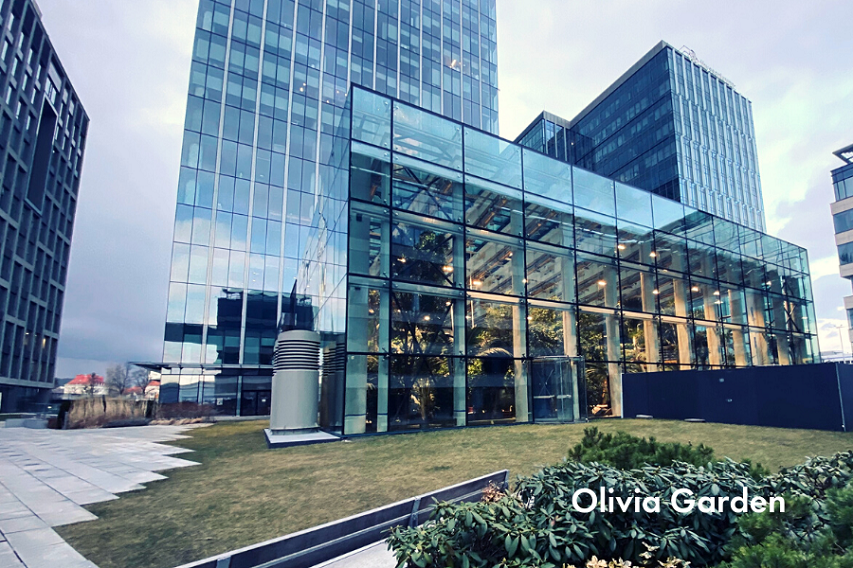A human being in the spotlight – how important it is to listen to the needs of our Residents
Some years ago, we came up with an idea to create a space in Olivia where you could “catch your breath” surrounded by nature. The final project concerning the creation of a “green archipelago” is the work of Malinowski Design Urban & Landscape studio and BXB Studio. However, it was crucial for us to see whether our internal conceptions and ideas were in line with the expectations and needs of the final User – you, our future guests.
We applied a well-tested method – Design Thinking. We were guided through the process by experts from SHOPA Design & Strategy. We listened to your opinions and found out what you needed the most.
You indicated such needs as:
- time for some rest
- immersing in the greenery
- Harmony
- hiding away from time to time
- temporary, profound non-working experience
You missed:
- greenery all year round
- scents and sounds of nature
- hideaway among greenery where you could have some rest and work in peace (deep-work)
- meetings with colleagues
You waited for:
- healthy snacks
- exotic, colourful cocktails
- Fresh Ingredients
- unique atmosphere
Why did we want to know that? To create a place which you will love, will be proud of and which you will visit regularly.
Thanks to the prototypes of the garden, dozens of meetings and hundreds of conversations with you, we could change the original idea especially for you to:
- increase the number of relaxation areas by 40%
- and the number of plants by 30%
- maximise the number of fruiting plants (we imported for example papaya tree and the strangest tree in the world – jabuticaba)
- redesign the mezzanine with the area of more than 90 m2 and prepare it in such a way to be able to integrate it with a 10-metre tree between its levels; The tree crown will be growing and will partially cover the mezzanine which will make you feel as if you were among tree branches (“hiding away”). Such an arrangement is the fulfilment of the dream of many of us: the possibility to be in a real, safe and cosy tree house
- take sensorics into account so that you could feel this place with all your senses
- acknowledge that a stage with a stand is a great idea so that you could participate in chamber music concerts and informal meetings
- in our project water is of great significance – but that’s coming soon…

– For the first, but certainly not the last, time, we applied design thinking method in our project for Olivia. During discussions with our Residents and Clients, we got to know them much better. In a short period of time, we realised that “You know nothing, Jon Snow”. Today we often go back to this time while planning the opening of the garden which name was chosen together with our Residents. We benefit from this knowledge and for sure we will be doing our best to implement Design Thinking in the DNA of our organisation. Especially because of the fact that it is focused on the needs of human beings and takes into account all points of view which are important for the project. Its key objective is to create something valuable and, perhaps above all, something useful – says Tomasz Woźniak, Chief Innovation Officer at Olivia Business Centre.

Thus, today Olivia Garden combines innovative thinking about the place of work and relaxation with the need to come back to nature. The idea of the place is based on the belief that the quality of space in which we work and spend time translates directly into the quality of life and productivity. We are creating a place which will enable you to work and play and will nurture the natural connection of people and nature.

About Design Thinking
For the first time, Design Thinking (hereinafter referred to as: DT) was defined and applied in the 1960s in the USA. The idea of Design Thinking is to create products and services based on real needs and in response to real problems. Thanks to DT our project team focuses on a HUMAN BEING. We do not focus solely on a product, but on USERS and solutions which will be optimal for them.
Design Thinking is based on five pillars:
- empathy – walking a mile in customer’s shoes
- defining a problem
- Generating Ideas
- prototyping, i.e. communicating ideas to recipients
According to Tony Mayo, a professor at the Harvard Business School: “Design thinking is a creative, systemic approach to solving problems which puts a user at the heart of experiences”.
Which entities use Design Thinking in their everyday activities? For example, Apple, Coca-Cola, Ford IMB, Nike, Procter & Gamble, Starbucks and Walt Disney. We can safely assume that without design thinking there would be no iPhones or hot cup sleeves.
According to analysts from Forrester Consulting, nearly 3/4 of the biggest American companies use DT. For 28% of them, this process, apart from providing innovative solutions, turned into a lasting element of company’s culture and a new working style. 40% of surveyed enterprises indicated that they implemented Design Thinking processes to increase customer’s satisfaction and for 30% of respondents DT means greater productivity. In Plattner, Meinel and Leifer surveys (2015) as many as 71% of respondents agreed that DT improved the work culture in their organisations and 69% of respondents claimed that the method optimised innovations in their companies.
The efficiency of the DT process is proved by the example of the American IBM company from the IT sector, which increased its revenues by dozens of billions of dollars thanks to this process. After implementing the process, IBM shortened the time needed to develop solutions by as much as 75% and at the same time halved the number of errors and defects in developed products.




